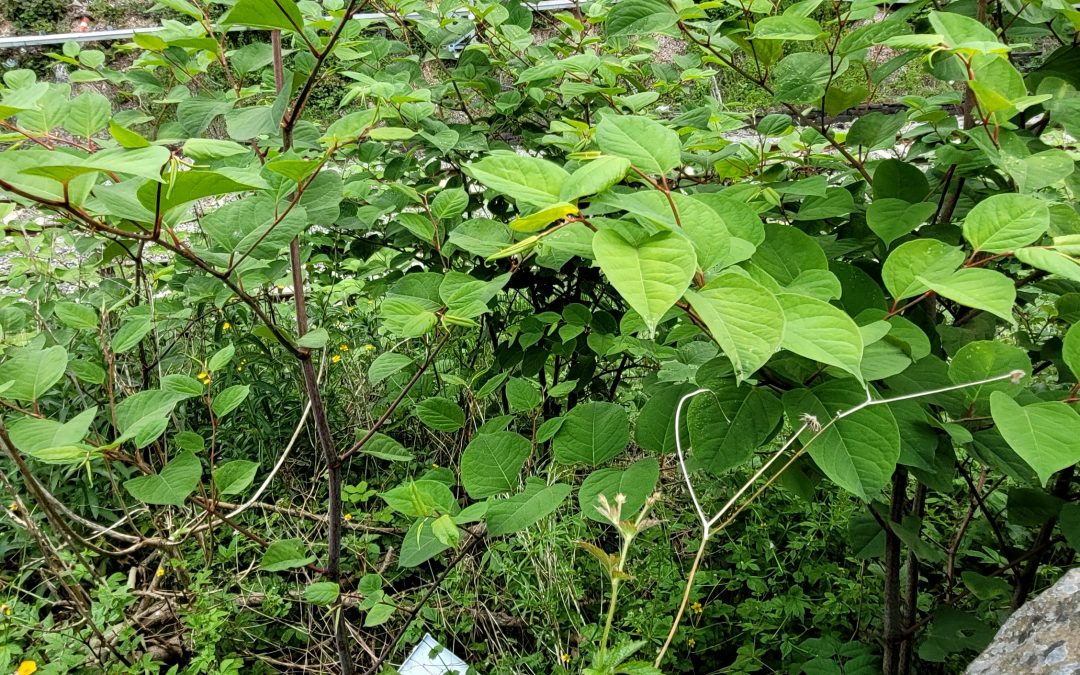Japanese Knotweed: What You Need to Know and How to Deal with It
Japanese Knotweed (Fallopia japonica)
Is a highly invasive plant species that can grow up to 20cm in a day, spreading quickly and aggressively. It has been identified as one of the most invasive plant species in the world, and if not dealt with correctly, it can cause significant damage to buildings and infrastructure. This article will discuss what Japanese Knotweed is, why it is a problem, and how to deal with it.
What is Japanese Knotweed?
Japanese Knotweed is a perennial plant species that is native to East Asia. It was first introduced to Europe in the 19th century as an ornamental plant but quickly became established as an invasive species. It is now found in many parts of the world, including North America, Australia, and New Zealand.
The plant has distinctive bamboo-like stems, with large, heart-shaped leaves that are arranged in a zig-zag pattern along the stem. It produces clusters of small, cream-colored flowers in late summer and early autumn. It can grow up to three meters in height and forms dense thickets that can be difficult to remove.
Why is Japanese Knotweed a Problem?
Japanese Knotweed is a problem because it can cause significant damage to buildings and infrastructure. Its roots can penetrate through concrete, tarmac, and other hard surfaces, causing damage to foundations, walls, and drainage systems. It can also grow through walls and floors, leading to structural damage.
In addition to its physical impact, Japanese Knotweed can significantly impact the natural environment. It can outcompete native plant species, reducing biodiversity, and altering ecosystems. It can also impact the habitat of native animals, such as insects and birds.
How to Deal with Japanese Knotweed?
Dealing with Japanese Knotweed can be a challenging and time-consuming process, but it is essential to act quickly to prevent it from spreading. Here are some steps you can take to deal with Japanese Knotweed:
- Identify the Plant: The first step in dealing with Japanese Knotweed is to identify it correctly. If you are unsure, it is best to seek the advice of a professional.
- Plan Your Strategy: Dealing with Japanese Knotweed requires a comprehensive strategy that considers the size of the infestation, the location, and the environmental conditions. This may involve a combination of physical removal, chemical treatment, and ongoing monitoring.
- Physical Removal: Physical removal involves digging up the plant, including the roots and rhizomes. This is the most effective method of removal, but it can be labor-intensive, and there is a risk of spreading the plant if not done correctly.
- Chemical Treatment: Chemical treatment involves applying herbicides to the plant. This can be an effective method of control, but it requires expertise and care to ensure that the herbicide is applied correctly and does not harm other plants or wildlife.
- Ongoing Monitoring: Once the plant has been removed or treated, ongoing monitoring is essential to ensure that it does not re-establish.
Conclusion
Japanese Knotweed is a highly invasive plant species that can cause significant damage to buildings and infrastructure if left untreated. It is essential to act quickly to prevent it from spreading, and a comprehensive strategy that considers the size of the infestation, location, and environmental conditions should be developed. Physical removal, chemical treatment, and ongoing monitoring are the most effective methods of control, and it is recommended to seek professional advice before attempting to deal with Japanese Knotweed.
